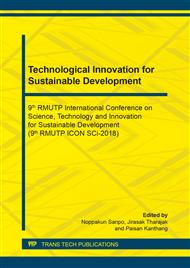p.224
p.230
p.239
p.246
p.253
p.263
p.269
p.275
p.280
Design and Construction of a Mini Magnetic Levitation Train
Abstract:
This article presents the design and construction of a mini magnetic levitation train. The design of the train is based on the theory of 3-phase Linear Induction Motor (LIM). The train consists of two main sections. The first part is the linear induction motor, which is the part that drives the train to move. The second part is the magnetic field winding, which is the part that raises the body of the train to float over the rails. Such train can move forward/backward in the same principle as forward/reverse rotation control of 3-phase induction motors. For that reason, this research controls the forward/backward movement of the train with a magnetic contactor set by using the same circuit as the control of the rotation of the 3-phase induction motor. The designed train can lift 1 mm above the rails and move within a distance of 1.48 m along the length of the rails. The test results showed drive voltage, drive force, average time and drive speed of the train. From the details and results of this article can be used as a guide to create a larger magnetic levitation train, which can be used more effectively.
Info:
Periodical:
Pages:
253-262
Citation:
Online since:
May 2019
Authors:
Keywords:
Price:
Сopyright:
© 2019 Trans Tech Publications Ltd. All Rights Reserved
Share:
Citation:


